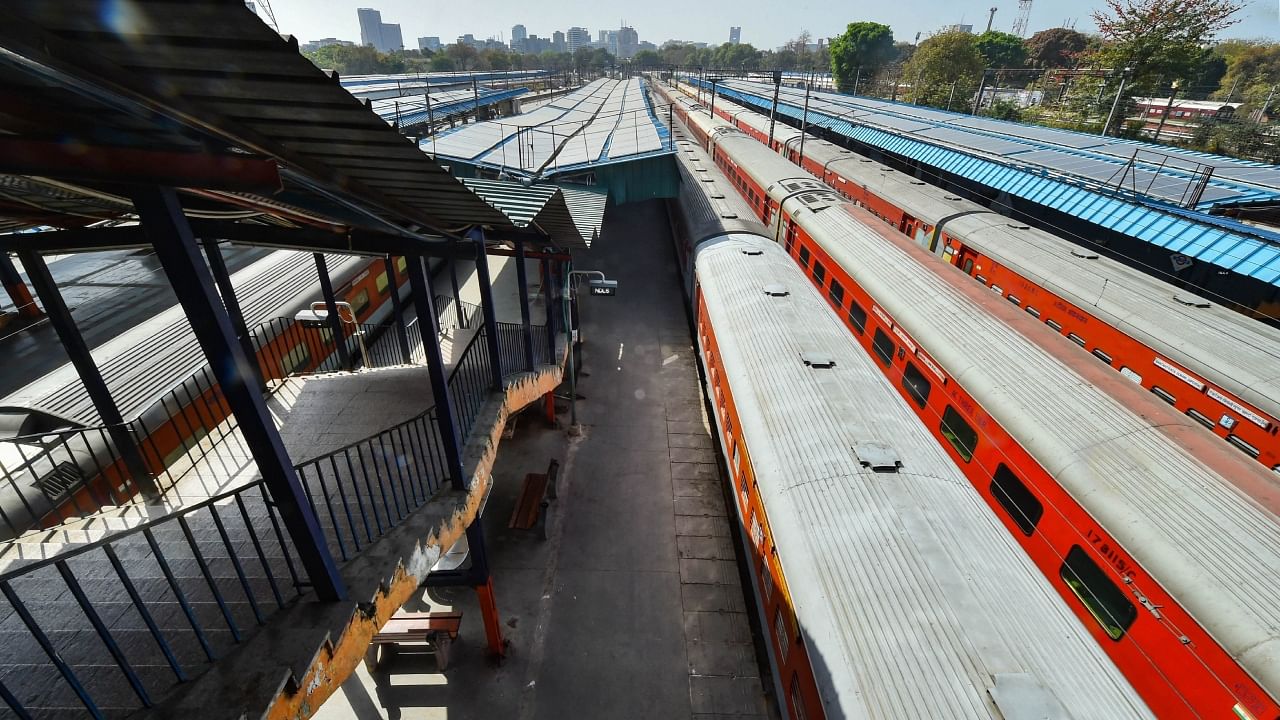
Indian Railways, a sprawling network that ranks among the world’s largest, is a long way from generating the amount of clean energy it needs to become net carbon neutral by 2030, its own stated goal.
The organization had installed renewable capacity of 142 megawatts of rooftop solar and 103.4 megawatts of wind energy as of August, according to a statement dated Oct. 7 and recently uploaded to its website.
“Indian Railways will attempt to reduce its carbon footprint primarily through sourcing of its energy requirements from renewable energy sources,” the statement said. “By 2029-2030, the expected requirement of installation of renewable capacity would be about 30 gigawatts.”
However at 245.4 megawatts currently, that’s just 0.8 per cent of the way there.
To increase the share of renewables, the railway has partnered with Ircon International Ltd. for 500 megawatt and Rewa Ultra Mega Solar for 400 megawatt solar power, which will be operational by 2025 and 2024 respectively, a spokesperson for India’s ministry of railways said in a statement. It is also floating a tender for 1.45 gigawatt solar plant, it said.
Also Read | Railways ousted one 'non-performer or corrupt official' every three days since July 2021
Ramping up clean energy for India’s rail electricity needs is a tall order considering the South Asian nation relies on dirty coal to generate over 70 per cent of its power. However it’s crucial for India to curb greenhouse gas emissions from trains to meet Prime Minister Narendra Modi’s pledge to become net zero by 2070.
Indian Railways said in its statement that other strategies toward becoming a net zero emitter include “taking a multi-pronged approach of electrification of routes, shifting from diesel to electric traction, promotion of energy efficiency, construction of dedicated freight corridors and green certification of railway establishments.”
Modi is seeking to modernize India’s railways, which are congested and aging, in part by banking on low-cost loans from Japan to build the country’s first bullet train and inviting investments from private firms to operate passenger trains for the first time.
Indian Railways has said it will achieve 100 per cent electrification by 2023 and become a net zero carbon emitter by 2030 but hasn’t publicly laid out a full plan about how that will be done.
The massive size of its rail network, which carries about as many passengers a day as Taiwan’s entire population, makes it difficult to increase clean sources of energy at the same pace as the soaring demand.
In its Oct. 7 statement, Indian Railways said it has electrified 52,508 route kilometers out of a total broad-gauge network of 65,141 route kilometers, or about 80.6 per cent. After Indian Railways electrifies 100 per cent of its routes, electricity demand will surge 243 per cent to 72 terrawatt hours in the 10 years through 2030.
It also said it plans to offset 60 million tonnes of emissions by 2030 using various measures including planting trees on vacant railway land, reducing water consumption and building waste-to-energy plants.
Other measures include:
- Setting up dedicated freight corridors to transport 45 per cent of land-based freight by 2030, up from 36 per cent, with the first phase of freight corridors reducing emissions by about 457 million tonnes over 30 years
- Using 5 per cent of blending biofuels in traction diesel fuel
- Setting up waste to energy/compost/biogas plants/material recovery facility at more than 250 stations
- In pact with Solar Energy Corporation of India Ltd. to get round-the-clock supply of 100 megawatt renewable power, according to the representative for ministry of railways
- Plans to install 50 megawatt of wind plant and procure 1,000 megawatt of round-the-clock renewable energy: spokesperson
- Plans to derive 800 megawatt of solar energy from Bundelkhand Saur Urja Ltd. by 2025, according to the representative